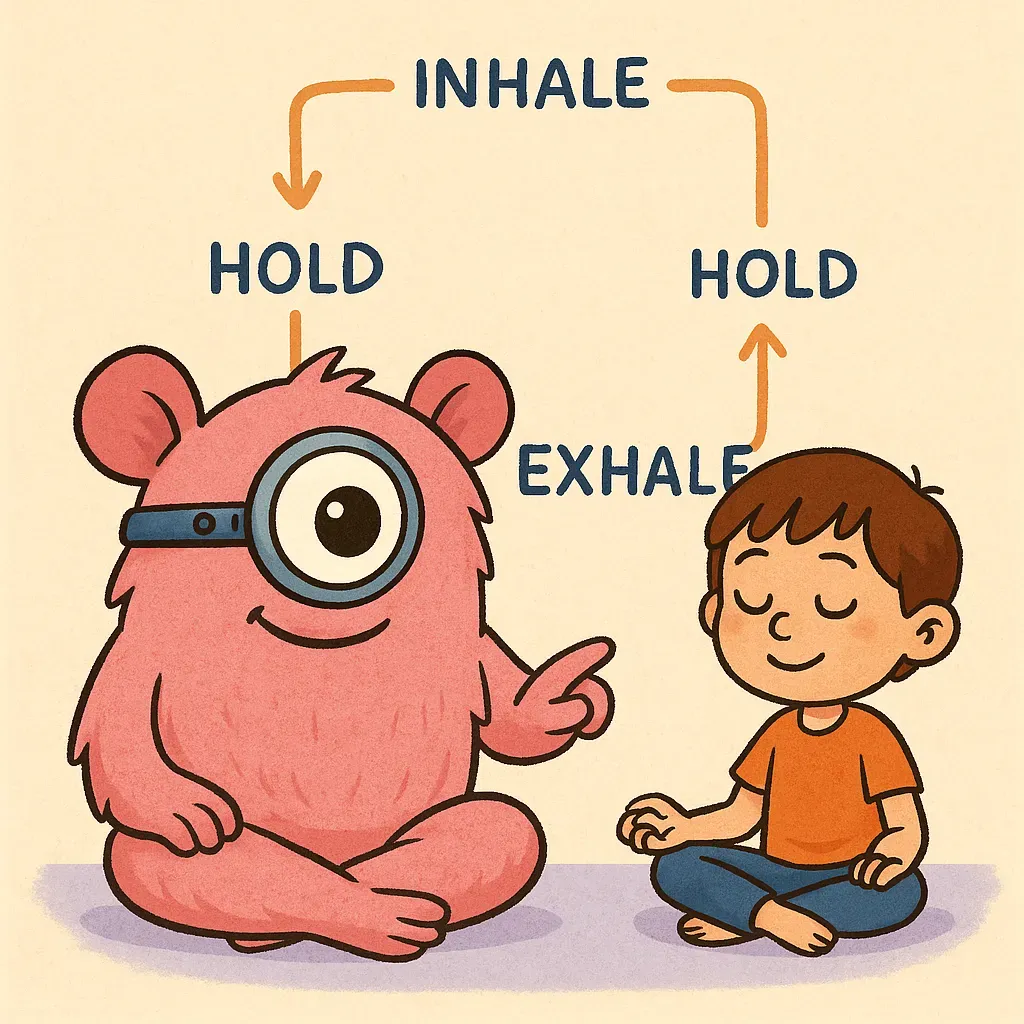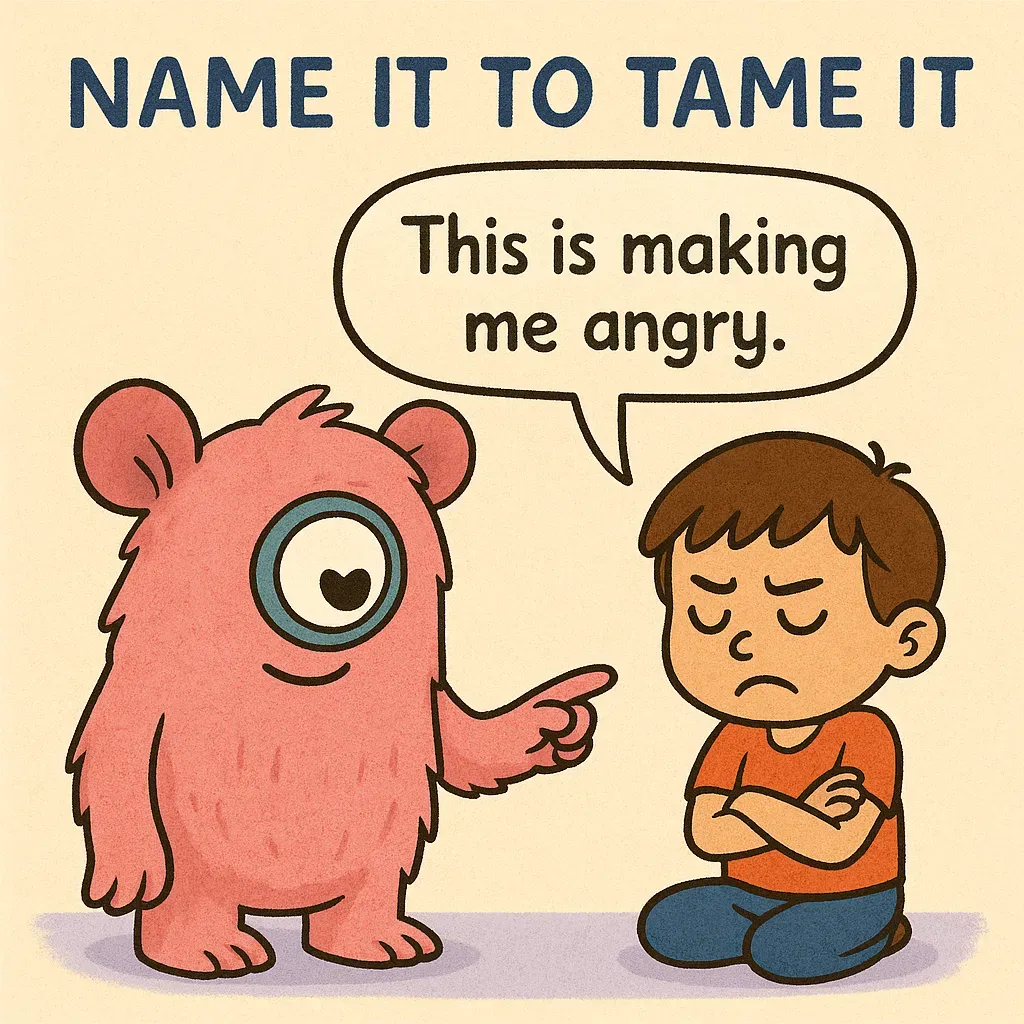Techniques for Teaching Emotional Regulation During Math Tasks
TL;DR: Kids don’t just need math strategies — they need emotional regulation tools for when math feels overwhelming. This post shares how to prepare before a task (set the tone, practice calming techniques), what to do in the moment (naming feelings, brain breaks, reframing), and how to reflect afterward (debrief, celebrate perseverance, plan ahead). Together, these strategies build resilience and confidence in math and beyond.
We've all seen it happen: a student gets really angry when they have to do a hard math problem. They just... stopped when the pencil hit the ground. What if we could teach them more than just math? What if we could teach them how to deal with their feelings, too?
All of this starts before the math work even starts.
Before the Math Task
We can make a place where problems are seen as chances to learn and where making mistakes is considered a normal part of the learning process. We take the pressure off by celebrating their work and the methods they use instead of getting the right answer.
The best part is that we can provide them with easy but effective ways to deal with stress ahead of time, like a quick "box breathing" exercise or a grounding method, so they know what to do when they feel stuck.

In-the-moment interventions
Okay, so it's clear that one of the students is getting frustrated. The prep work is done, and now we're in the thick of things. What are you doing now? With these quick, easy steps, you can quickly calm them down and get them back on track.
According to a PubMed Central research, math anxiety can be reduced by emotion regulation (ER) measures, although their efficacy may vary.
Name it to tame it
This initial step transforms arithmetic learning for all children, but it's extremely effective for neurodivergent math learning. Identify the acute feelings of fear or frustration that obstruct these learners' thinking to clear the mental confusion.
They should label their emotions. "This is making me angry" or "This is too much for me to handle" can soften its impact and make it appear more manageable.

Strategic pausing (Brain breaks)
Taking a break is sometimes the best thing to do. Help them take a "brain break" by telling them to close their eyes, stretch, or go for a quick walk to get some water. This isn't giving up; it's a plan to clear their mind and stop being so mentally busy.
Reframe their self-talk
You might say things to yourself like "I'm so bad at this" or "I can't do it." Help them rethink it in a gentle way. You can show others how to do it or ask yourself things like, "Okay, instead of I can't do this, let's try. What's one small step I can take right now?"
Focus on strategy, not the solution
If a student is having trouble, our first thought might be to give them a tip about the answer. Instead, put all of your attention on the work. Ask them questions that show you care about what they think, not just what they say: "Interesting!" "What else have you tried?" or "What's another tool or plan we could use here?"
Reflective practices (After the task)
Understanding the 'why' behind these tactics might boost their effectiveness for teachers. Educators seek behavioral support training as part of their professional development. Some teachers could even undergo professional courses like these ones to learn the Applied Behavior Analysis principles behind these methods
When we debrief a student's emotional journey, we use data-driven reflection and functional assessment. Advanced training helps teachers turn classroom intuition into evidence-based practice by systematically identifying what works and why.
There is no longer a job, but there is still much more to learn. After a challenging job, reflect, rejoice, and plan for next time. This exercise turns a basic math issue into a strength lesson.
Debrief the emotional journey
Talk about the rough spots. Simply ask, "Hey, where did you get stuck?" as often as possible. Or, "I noticed you looked frustrated for a minute there—what did you do to get through it?" This makes the fight seem normal and shows how well they can deal with it.
Celebrate perseverance
This is crucial. How hard they worked is more important than whether the answer they gave was right or wrong. Show their perseverance: "I was so impressed with how you didn't give up when that fraction problem got tricky," or even "The way you tried a different strategy was awesome!" They feel like their hard work is being noticed.
Plan for future challenges
Building on achievement is the final, critical phase. Help them make their own tools next time. Ask, "Your deep breath helped. Might you reuse that?" Or, "Which of our strategies worked best for you today?" This provides people with confidence that they can handle challenges and have a backup plan.
Any BCBA program that teaches functional skills teaches this way of rewarding successful coping mechanisms. It lets pupils construct their own behavior strategy for future obstacles.
Fostering resilient mathematicians
In the end, teaching math students how to control their emotions isn't about one magic trick; it's about making a whole system of support. The proactive work to get ready for the job, the quick help during a tough spot, and the deep reflection afterward all work together.
At its core, this method changes the whole point of math class. We stop just looking for the right answers and start making people who are emotionally strong, can think strategically, and aren't afraid of a task.
We give kids something much more useful than math help when we do this. We give them skills that they can use anywhere, so they can face any hard problem with confidence and persistence, whether it's on paper, online, or in real life. We're not just teaching them how to solve for x; we're also teaching them how to be strong and creative people.
FAQ
Q. Why is emotional regulation important in math learning?
Because math anxiety can block working memory and problem-solving, teaching regulation strategies helps children access their full thinking potential.
Q. What are “in-the-moment” interventions?
They’re quick strategies like naming emotions, pausing for a brain break, or reframing self-talk that help kids calm down when frustration spikes during a math task.
Q. How can parents or teachers prepare children before math tasks?
By normalizing mistakes, celebrating effort, and practicing simple calming methods like box breathing, adults help kids feel safe before starting math work.
Q. What should teachers do after a challenging math lesson?
Debrief the emotional journey, highlight perseverance and work with students to identify strategies that helped. This reflection builds confidence for future challenges.
Q. Do these strategies only help neurodivergent learners?
No. While they’re especially effective for neurodivergent kids, all students benefit from learning emotional regulation alongside math.
References
Malanchini, M., Rimfeld, K., Shakeshaft, N., Schofield, K., Selzam, S., Dale, P. S., & Plomin, R. (2021). When the going gets tough: The effects of academic adversity on students’ motivation, achievement, and mental health.Frontiers in Psychology.
- Authored by Dr. Imed Bouchrika, PhD, BSc.
Author Bio

Dr. Bouchrika is a Computer Science professor from the University of Southampton, UK, specializes in eLearning, image processing, and biometrics. He contributes to journals, conferences, and IT start-ups.

